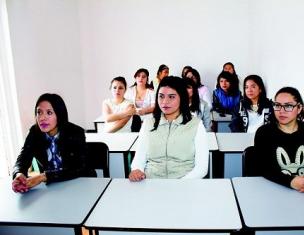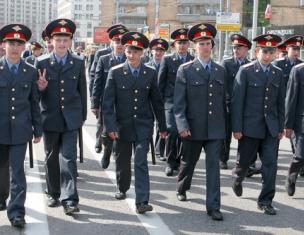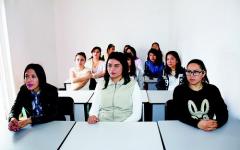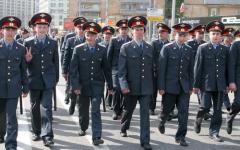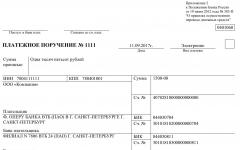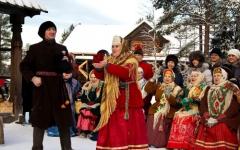Pleshakov, Sonin
Natural history (page by page)Natural history
(page by page)Natural history
(page by page)Natural history is included in the compulsory curriculum of secondary schools. This subject is studied by students from 1st to 6th grades, that is, junior schoolchildren. Since due to age, understanding such sciences as Biology, Geography, Ecology and Astronomy is very challenging task perception, for students in grades 1-6, a comprehensive Natural History course was specially developed as a synthesis and generalization of knowledge from many interrelated sciences about the Earth and its nature.
Study of Natural History in high school, as well as other subjects, implies, in addition to studying theoretical material, also independent work of students on performing various practical tasks. It's no secret that not all schoolchildren cope equally well with such tasks. That is why, in order to improve academic performance, a separate GDZ workbook on natural history was written for each grade from 1st to 6th, with the help of which you can easily and quickly complete any task of any complexity or check the answers.
On our website to help students and their parents for effective preparation There are additional materials for the lesson, including natural history. You can use all materials at any time convenient for you - access is not limited. You can open the website at any time and view the State Educational Resource Book on natural history online so as not to waste your time. If you wish, you can download GDZ on natural history to your computer in order to have them on your “desktop” and not open the site again if you suddenly need to check the correctness of the assignments.
If you don’t use cheat sheets and the popular method of earning good grades, such as cheating, too often, then there will be nothing wrong with sometimes looking at the solution book and correcting mistakes in your tests. To make it easier to cope with homework, read more literature close to the topic training course on Natural History, for example, a children's encyclopedia, books about wildlife and great travel scientists, etc.
You can use the worksheet when preparing for test work or reading a report in class. In this case, to test yourself, complete the tasks from the workbook yourself, and then take ready-made homework assignments, and it will not be difficult to check the answers and find out the result of your preparation for the lesson. As a last resort, if you don’t have time to do anything at all, then you can very thoughtfully, having understood all the tasks, write off the GD in natural history in order to save more time.
Option 1
I . Choose the correct answer.
1. In models of the Universe according to Aristotle and Ptolemy in the center
located:
a) Moon; b) Sun; c) Earth.
2. The first to use a telescope to study celestial bodies:
a) N. Copernicus; b) J. Bruno; c) G. Galileo.
3. On the surface of the Earth there is:
a) earthquake source; b) the epicenter of the earthquake.
4. Driest continent:
a) Australia; b) Africa; c) South America.
5. Huge reserves of water are available to:
a) all planets solar system; b) Earth and Mercury; c) only the Earth.
6. Human ancestors were:
a) chimpanzee; b) gorilla; c) extinct Dryopithecus monkeys.
7. Where did the development of life on Earth begin:
a) in the ocean; b) on land; c) in the waters of volcanoes; d) in soils.
8. Wings are a device for existence in:
a) water; b) ground-air; c) soil.
9. Asteroids are
a) the smallest solid particles;
b) fairly large bodies Not correct form circling around
The Sun, mainly between the orbits of Mars and Jupiter;
c) large celestial bodies of regular shape revolving around the Sun.
10) Who discovered America?
a) Christopher Columbus; b) James Cook; c) Marco Polo.
II
1. N. Copernicus created new model Universe, at the center of which
placed the Sun.
2. The discoveries made by J. Bruno using a telescope proved
correctness of the world system of N. Copernicus.
3. Mars is a terrestrial planet.
4. The planet closest to the Sun is Venus.
5. The solar system is formed by 9 planets.
6. The sun is a star.
7. A planet is a relatively cold celestial body.
8. Stars are celestial bodies that shine with reflected light.
9. The closest star to Earth is the Sun.
10. A constellation is a section of the sky.
11. There are nine continents on Earth.
12. The largest continent is Africa.
13. The Amazon is the longest river on the planet.
14. The largest lake is Black.
15. The smallest continent is America.
III
1. List the bodies of living nature.
1. Porcini 4. Stream
2. A piece of chalk 5. Bacteria
3.Pine 6.Book
2.What sciences are considered natural?
1.Chemistry
2.Physics
3.Informatics
4. Biology
5. art
6. History
IV . Match.
1.They were afraid of fire
3.Knew how to make a fire themselves
Certification material for conducting intermediate certification in 2012 -2013 academic year in natural history in 5th grade
Option 2
I . Choose the correct answer
1. One of the first thoughts about what's in the center The universe is
The Sun said:
a) Aristotle; b) Aristarchus of Samos; c) Ptolemy.
2. Galaxy is:
a) the Sun and the planets revolving around it;
b) several stars;
c) a giant cluster of stars, a star system.
3. In the depths of the volcano there is:
a) volcanic in nature; b) source of magma.
4. Groups of islands are called:
a) continents; b) continents; c) archipelagos.
5. The development of life on Earth began:
a) 300 million years ago; b) 3.5 billion years ago; c) 10 billion years ago.
6. The first to appear on Earth:
a) homo erectus; b) a skilled person; c) a reasonable person.
7. The main organelles of the cell are:
a) cytoplasm, nucleus, membrane;
b) shell, cytoplasm, mitochondrion;
c) nucleus, chloroplasts, lysosome.
8. Panda lives:
9. Comets, being near the Sun, consist of:
a) core and tail; b) core and gas shell; c) core, gas shell and tail.
10) Who discovered Australia?
a) James Cook; b) Willy Janson; c) Vasco de Gama.
II . Write down the numbers of the statements that are true?
2. Giant planets consist predominantly of gases and lack
hard surfaces.
3. Asteroids are stars located at great distances.
4. A comet is a light phenomenon that occurs when celestial stars enter
bodies into the atmosphere.
5. A meteor is a cosmic body that fell to Earth.
6. J. Buffon suggested that the solar system arose from
cold dust cloud.
7. Kant believed that the planets were formed from “splashes” that arose in
the result of a comet hitting the Sun.
8. Rocks are made up of minerals.
9. The mantle covers the core.
10. Rocks always consist of several minerals.
11.Only on Earth was life discovered.
12.Groundwater makes up 2% of all water on Earth.
13. Dinosaurs are one of the groups of ancient reptiles.
14. All bodies of inanimate nature and living beings consist of cells.
15. Wildlife divided into two kingdoms - plants and cells.
III . Choose three correct answers.
1. Characteristics of the asteroid.
1. Hot gas ball
2. Rotates around the Sun
3. Glows in the dark.
4. Irregularly shaped.
5. Debris building material planets.
3.From the proposed list, select the names of the constellations.
1. Cassiopeia
2.Sirius
3.Betelgeuse
4. Ursa Major
5. Helios
6. Polar
7. Libra
IV . Match.
1.Used natural tools
2. Made stone tools
3. They made tools from stone, horn and bone
A) Homo sapiens b) Homo habilis c) Australopithecus
Certification material for conducting intermediate certification in the 2012 -2013 academic year in natural history in grade 5
Option 3
I . Choose the correct answer
1. Was the first to suggest that The earth has the shape of a sphere:
a) Aristotle; b) Pythagoras; c) Ptolemy.
2. The earth is made up of:
a) core and crust; b) core, mantle and crust;
c) mantle and crust.
3. The highest mountains of our planet:
a) Andes; b) Himalayas; c) Cordillera.
4. Life discovered:
a) on Earth and Mars; b) on Earth; c) on Earth and Venus.
5. The development of life has begun:
a) in the ocean; b) on land.
6. When did the development of life on Earth begin:
a) 400 million years ago; b) 300 million years ago;
c) 200 million years ago; d) 3.5 billion years ago.
7. The Plant kingdom includes:
a) mosses, algae, ferns,
b) mosses, algae, bacteria,
c) green euglena, bacteria, flowering plants.
8. Victoria region grows in:
a) Eurasia; b) Africa; in Australia; d) South America.
9. Meteor is:
a) the smallest solid particles revolving around the Sun;
b) a light flash resulting from the combustion of cosmic
particles in the atmosphere;
c) the remains of a celestial body reaching the surface of the Earth.
10) Extinct species of plants and animals are listed in:
a) The Red Book; b) Black Book; c) Green Book.
II . Write down the numbers of the statements that are true?
1. Only the Earth has a satellite.
2. Uranus belongs to the terrestrial planets.
3. Among the giant planets, only Saturn has a ring.
6. The Earth's crust is the solid upper shell of the Earth.
7. The mantle is located in the center of the Earth.
8. The place where rock shear occurs is called a focus
earthquakes.
9. When a volcano erupts, magma pours onto the surface of the Earth.
10. The landmass of the planet is formed only by continents.
11. The world ocean consists of 4 oceans.
12. The largest ocean is the Pacific.
13. Glaciers are formed by fresh ice.
14. The simplest organisms were discovered on Mars.
15. The ozone layer keeps the planet warm.
III . Choose three correct answers
1.Star Characteristics:
1.Shines with reflected light
2.Shines with its own light
3. Hot gas ball
4. A huge block of ice
5.Rotates around its own axis
2. The sun is:
1. Center of the Solar System
2. Center of the Universe
3.Hot planet
4. Hot gas ball
5.The closest star to Earth
IV . Match.
1.They were afraid of fire
2. They knew how to maintain the fire
3.Knew how to make a fire themselves
a) Homo sapiens b) Homo habilis c) Australopithecus
Key to the test (Natural history - 5kl)
Option 1
Option2
Option3
Exercise 1
1-in
2-in
3-b
4-a
5-in
6-in
7-a
8-b
9-b
10-a
Exercise 1
1-b
2-in
3-b
4-in
5 B
6-b
7-a
8-a
9-in
10-a
Exercise 1
1-b
2-b
3-b
4-b
5-a
6-g
7-a
8-g
9-b
10-b
Task 2
1,3,5,6,7,9,10
Task 2
2,4,7,8,10,11,13
Task 2
4,6,8,9,11,12,13
Task 3
1, 3,5
1,2,4
Task 3
2,4,5
1,4,7
Task 3
2,3,5
1,4,7
Task 4
1-in
2-b
3-a
Task 4
1-in
2-b
3-a
Task 4
1-in
2-b
3-a
Evaluation criteria
Tasks 1, 2,4 – are worth 1 point
Task 3 – worth 2 points
Maximum number of points – 24
Minimum number of points - 8
Grading scale:
24 – 17 points – score “5” (excellent)
16- 12 points – score “4” (good)
11 – 8 points – score “3” (satisfactory)
below 8 points – grade “2” (unsatisfactory)
From the ecology of nature to the ecology of the soul.
Seas, rivers, bays.
1.Which sea only lives up to its name in bad weather?
(Black Sea.)
2. Which river, which once flowed near the walls of the Kremlin, did the Muscovites remove underground? (Neglinka.)
3. What river is there in your mouth? (Gum.)
4. Which ocean washes sailors with its name? (Pacific Ocean.)
5. List the names of the four different colored seas. ( Black, Yellow, White, Red.)
6. Which lake has 336 sons and one daughter? (Baikal.)
7. Which river is named after a woman? ( Lena.)
8. There is water all around, but drinking is a problem. Where does this happen? (In the sea.)
9. Add one of the measures to the name of the animal and you will get a full-flowing river. (Vol-ga.)
10. One of the big cities is located on a river whose name consists of six letters. Reading this name through a letter, we get the name of another river into which the first one flows. (Moscow, Oka.)
11.A river whose name consists of a food product and female name. (Cheese – Daria.)
12.Where the roots curl along the forest path, a small saucer is hidden in the grass. Everyone who passes will come up, get drunk and gain strength for the road again. (Spring.)
13. This name is given to the knife, as well as the sea bay. Keep your eyes on the west, you will find it on the map. (The Gulf of Finland.)
Cities
1. Which city “floats” in the air? ? (Eagle.)
2. A boy sits at a desk, with a city on the map. (Vladimir.)
3. The first part of the city is a bird, the second part is a mammal. (Voronezh.)
4. One part is a great river, the other is precipitation falling in the form of an icy drop. . (Volgograd.)
5. Which city is made up of a preposition and the name of a note? (Ufa.)
6. Which city consists of one boy's name and a hundred girls' names? (Sevastopol.)
7. I am a hero city, standing above the Neva River. (Saint Petersburg.)
8. Which city's name ends with the name of a deciduous tree? (Sevastopol.)
9. Which city beats and condemns? (Kolomna.)
Sides of the horizon
1. From which ladle do they not drink or eat, but only look at it? (The constellation Ursa Major.)
2. Where do the southern winds always blow? (At the North Pole.)
3. What is the name of the amazing point on the globe where the North Star stands overhead, where there is no division of time into days and nights, where you can travel around the world by turning 360 degrees? (North Pole.)
4. The edge is visible, but it is impossible to reach it. (Horizon.)
5. Where will the head of the sunflower turn its face at noon? (South.)
6. Where does the compass needle point south at both ends? (At the North Pole.)
7. My first syllable is a piece of earth,
The second is the sending of a football player.
And take everything with you on the hike,
Since it’s not close to you to go into the forest. (Compass.)
Animals
Which bird, having lost one letter, became the largest river? (Oriole.)
What animal is called the “ship of the desert”? (Camel.)
Which birds arrive from the south first? (Rooks.)
What is the biggest bird? (Ostrich.)
What is the smallest bird? (Hummingbird.)
How many times do you need to take the letter "a" to get a bird? (Magpie.)
Even though I'm not a hammer -
I'm knocking on wood.
Every corner is in it
I want to examine it. (Woodpecker.)
The furry one flies for sweets . (Bee.)
In the summer he follows the plowman, in the winter he leaves screaming. (Rook.)
Small, but not cute to anyone. (Mice.)
How to write a mousetrap in five letters? (Cat.)
There are lumberjacks on the river
In silver-gray fur coats
From trees, branches, clay
They are building eternal dams. (Beavers.)
13.What beetles are named after the month in which they appear? (May.)
14. The first one is lying on the ground,
The second flows into the Volga,
But in general it is called a bird . (Magpie.)
15. What bird lives in the forest and calls its name in the heat? (Cuckoo.)
Plants
What is born in bread, but is not good to eat? (Cornflower.)
Nobody scolds her, but she trembles . (Aspen.)
In cold weather he is naked, in hot weather he puts on clothes. (deciduous tree.)
What two notes grow in the garden? (Beans.)
In spring it is green,
In the summer - tanned,
In the fall - put it on
Red corals . (Rowan.)
6. I threw one away and took a whole handful. (Corn.)
7. Three simple words– a note, a circle, a union – together they give us a vegetable that tastes good. (Radish.)
8. If the last one beats the whole,
The first one won't work. (Grape.)
Miscellaneous
The first digit is in the middle,
A letter at the beginning and a letter at the end,
In general - forests, cities and plains,
Hearts full of love for the whole. (Motherland.)
There are seas - you can’t swim,
There are roads - you can’t go,
There is land - you can’t plow it. (Geographic map.)
Which one of you will answer?
It’s not fire, but it burns painfully,
Not a lantern, but shining brightly,
Not a baker, but a baker . (Sun.)
It curls around the nose,
But it’s not given into your hands . (Wind.)
Sister goes to visit brother
And her brother is hiding from her. (Day and night.)
To use the preview, create an account ( account) Google and log in: https://accounts.google.com
Preview:
Subject: OLYMPIAD IN NATURAL SCIENCE
2nd grade.
Compiled by: Natalya Olegovna Zyuzina, Omsk “Secondary” comprehensive school No. 132."
- They say that the cuckoo was planning to make a nest out of it. I started talking and forgot about the nest, but the yarn remained. Name the plant.
A) cuckoo color; B) cuckoo tears; B) cuckoo flax
- According to popular belief, this plant blooms on the night of Ivan Kupala, and whoever manages to find the miracle flower will find a rich treasure. But in fact, this plant does not have flowers. What kind of plant is this?
A) fern; B) mine; B) horsetail
- What fruit does not grow on a palm tree?
A) date; B) pineapple; B) coconut
- This plant is a favorite dish of cows. What plant do people say about: “When it grows... there will be butter and cheese”?
A) lupine; B) bluegrass; B) clover
- Which plant is called a plant cow?
A) peas; B) beans; B) soy
- The name of which plant has nothing to do with the dishes?
A) egg capsule; B) susak; B) water lily
- This is the name given to both a gullible, simple-minded person and a plant. What is it about?
A) burdock; B) simpleton; B) wormwood
- Which word is not the name of a forest?
A) linden; B) spruce forest; B) poplar
- What did the peasants do on Lukov Day?
A) organized onion markets; B) planted onions; B) remembered St. Luke
- What vegetables are called “blue”?
A) beets; B) eggplants; B) onion
11. What kind of cereal is called barley?
A) cereals from wheat kernels; B) cereal from rye kernels; C) cereal from barley kernel.
12. Find a representative of the fauna in the picture?
A B C)
13. Which plant name does NOT contain an animal organ?
A B C)
14. Whose child: he has a big head, he has no legs, but he has a tail with which he swims.
A) fish; B) mosquito; B) frogs.
15. Whose shoe?
A) Anyutin; B) Venus; B) Maryin.
16. Which representatives of the animal world will not be found on the Star Map?
A) sable; B) lynx; B) giraffe.
17. What unites the Earth, the Sun and the nut?
A) shell; B) mantle; B) core.
18. Which animal can change skin color?
A) zebra; B) chameleon; B) hare
Answers to Olympiad questions:
1. B) cuckoo flax;
2. A) fern;
3. B) pineapple;
4. B) clover (clover);
5. B) soy;
6. B) susak;
7. A) burdock;
8. B) poplar;
9. A) organized onion markets;
10. B) eggplants.
11. C) cereal from barley kernel
12. B) hare
13. A) pansies.
14. B) frogs. This is a tadpole.
15) B) Lady's slipper.
16 A) sable.
17) B) core.
18) B) chameleon
Olympiad work on natural history, grade 5
Part 1. When completing the tasks of this part (1-10) Choose one correct answer and circle it in the answer form field.
1. How many days are there in February in a leap year?
2. Specify the fossil fuel.
1) coal 3) clay
2) iron ore 4) limestone
3. What animal can be found in the steppe zone?
1) brown bear 3) gopher
2) arctic fox 4) polar owl
4. Please indicate natural areas in order of location from north to south.
A. forest B. desert
B. tundra G. steppe
1) ABCG 2) ABGV 3) BAGV 4) BVGA
5. Which ocean is the coldest?
1) Pacific Ocean
2) Atlantic Ocean
3) Indian Ocean
4) Arctic Ocean
6. What trees don't shed their leaves in the winter?
A. spruce B. pine
B. larch G. cedar
7. Point out the signs of summer.
A. A lot of food for birds is insects.
B. The sun rises higher above the horizon than in spring.
B. The weather is hot and sunny.
G. Leaf fall.
8. At what temperature does water begin to boil?
1)+ 50°С3)0°С
2)+ 100 °С4) -20 °С
9.What is a natural phenomenon?
1) sun 3) cloud
2) moon 4) rain
10. What is a globe?
1) model of the Sun 3) model of the ball
2) model of the Earth 4) model of the ball
Part 2. When completing tasks in this part (11-15), write down the answer.
11. Complete it to make a true statement.
The Earth's satellite is ….
12. Identify a group of animals based on characteristics.
They have six legs, a head and a torso. They are an excellent food for most birds. With the onset of autumn cold weather, they hide under the bark of trees, in fallen leaves and withered grass. Answer: …
13. Write down the name of this natural phenomenon, When a very strong wind blows, tearing tiles from the roofs of houses, uprooting large trees, causing great damage agriculture. Answer: …
14. Which living creature Is upright walking, speech and consciousness inherent on Earth? Answer:..
15. In what groups of animals is the baby called: a) caterpillar, b) tadpole c) bloodworm, d) squirrel, e) maggot, f) puppy? Answers: a)…b)…c)…d)…e)…f)…
Key to the Olympiad in Natural History for 5th grade students 2011-2012 school year. of the year.
Part 1 tasks (1-10) Evaluated with a maximum of 10 points (according to 1b. per point).
Part 2 tasks (11-15) – Maximum 12 points:
11-14 – 1.5 points for each correct answer,
Task 15 - 1b each. per point (total – 6b.),
Answers
|
Part 1. |
Job No. |
Possible answer |
||||||
|
Part 2 |
||||||||
|
Insects |
||||||||
|
Seals (harp) |
||||||||
|
Wolves/jackals/foxes, etc. |
||||||||
|
Maximum: 20 points |
||||||||



